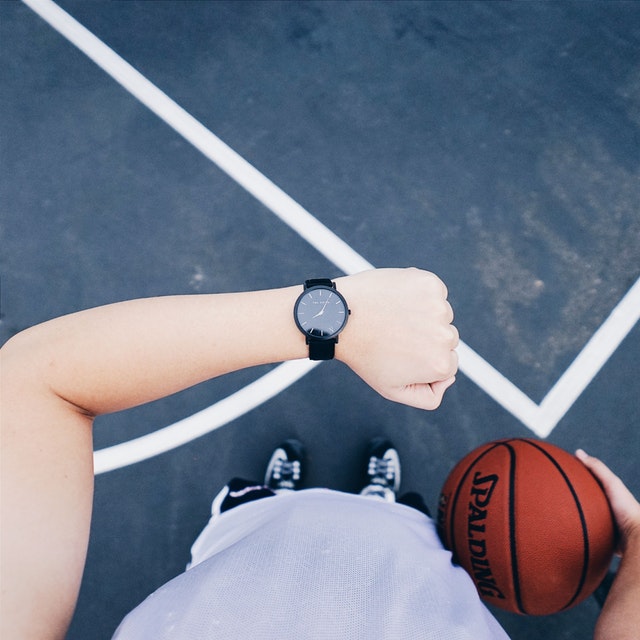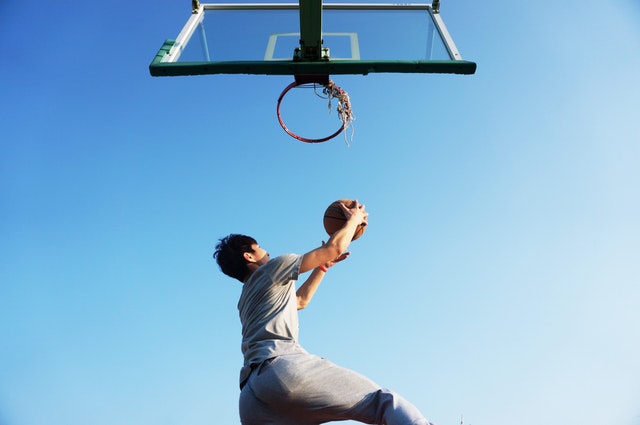It Started with a concept to choose his wife’s kitchen towels and hang them on his waistband just like a quarterback.

Michael Luscher, today the Founder and Chief Executive Officer in POINT 3 Basketball had a difficulty that assails several basketballers – he’d play basketball for hours at a hot gym, his palms getting sweatier and sweatier. The frustration of needing to cease play to wipe off his palms eventually became enough of a hassle. Plus, it spawned the notion of producing his existing business, which places smart technologies such as terry fabric detailing in shorts and dominate loop sleeves which place silicone grips onto a participant’s hands. The idea to re-evaluate the basketball apparel sector came to Luscher at August 2009. From there, things moved quickly. POINT 3 filed its initial patent application in September 2009, went via a family and friends round of financing quickly thereafter, and officially launched as a completely operable firm with a craft web site in 2010. Luscher spent this year seeing factories and textile mills, attempting to discover a means to construct basketball shirts and equipment the “right way.”
Dubbed as the man you just don’t want to guard on the basketball court since he sweats heaps, Luscher went on a mission to make equipment that solved his very wet and uncomfortable problem.
POINT 3 today generates what it calls “The World’s Greatest Basketball Shorts,” including DRYV panels for ballers to wash their hands on, bonded pits (not stitched) so that they never cling or stick while running and leaping, heat transfer panels for easy venting and cool maintenance when playing inside and heavy, articulated pockets to keep valuables from falling out (and out of the way when running). Not merely are the shorts ideal for basketball, but they’re comfy for additional athletic applications too. What might be of all import into this consumer is that they’re also quite aesthetically pleasing.
The basketball shorts are just one of many advanced products now Offered by POINT 3 Basketball. The organization’s line of product includes comfortable basketball hoodies; comprising thumb loops at the sleeves which set silicone grips at the hands of the participant – ensuring that a pass is never missing, a “SNYPER” top with built in DRYV panels onto your shoulders and a “Base Tank” with compression technologies.
Luscher understood that there was a gap in the space for a brand focused primarily on the demands of basketball players. He noticed that when people consider basketball equipment, they think of product designed for the ankle and below. In his words, “There hadn’t been a basketball innovation in the basketball space above ankle since the tank top.”
While there’s lots of promise with this youthful three-and-a-half-Year-old firm, it’s already faced its own share of challenges. Initially, Point 3’s thought was to market its merchandise wholesale to retailers. In May 2011, Modell’s Sporting Goods became among Point 3’s earliest customers. But, Point 3 immediately recognized that its margins were reduced and its capability to develop through its current business model was slender. Therefore, it did a pivot and purchased all of its things back from every merchant under contract with them. It sells its revolutionary products directly to the user through four stations – its web agency designed e-commerce site, direct to basketball players in tournaments around the nation, an “Alpha Program” – 25 agents based around the USA that are fulltime coaches and coaches and sell Point 3 equipment to children they train and coach, and the organization’s own catalogue. Luscher has decided that his firm has the best opportunity to increase if he concentrates on grassroots outreach and places particular focus on the growth of his Alpha Program.

Point 3 also discovered itself filing lawsuits early in its own existence. But, it was a litigation that it hailed as a plaintiff. On April 21, 2011 Point 3 Basketball registered a complaint at Nike in the U.S. District Court for the Southern District of New York, where it alleged that Nike infringed on the youthful firm’s trademark. Point 3 claimed that Nike’s “Jordan Fly Wade” lineup of basketball footwear and related apparel comprised a stylized “3” design emblem, which was almost identical to Point 3’s federally documented emblem. The situation resolved when the case was voluntarily dismissed by the parties on October 6, 2011. The lawsuit unintentionally served to increase the profile of Luscher’s brand.
The next challenge for Point 3 could be the increasing of funds, Although Luscher seems to have a grip on this too. While he couldn’t discuss specifics concerning the sum which his firm plans to increase, Luscher did disclose in a FORBES interview that his company is at the center of raising capital for a Series A round, that was established approximately April 1 and needs to be closed within 30 days. Point 3 isn’t yet earning a net profit, but it did record that a triple digit percentage earnings growth has been achieved within the last two years.
Luscher believes he has a fantastic product, with his biggest challenge being “getting the word out, scaling up and getting people to know who we are”. Luscher is by no means a newcomer and has had plenty of experience around the sports industry; he has spent 6 years at the MLB Commissioner’s Office and then worked for the NFL for 4 years.
Point 3 has invested a great deal of time building its brand on social websites (over 60,000 likers on its own FB page) and wishes to mimic the amazing project Under Armour has achieved in telling a wonderful story about what its own new brand signifies on a wide scale.
Point 3’s plan would be to redefine its own brand in the brain of this consumer as a company that’s evolving basketball equipment. It’ll focus mostly on the user in the upcoming few years of its presence. Meanwhile, the Point 3 includes 3-to-4 designs for new goods in the hopper which Luscher claims are equally as advanced as “The World’s Best Basketball Shorts” fabricated by his firm.
“If we can’t make a product that’s better, it’s not going to have our logo on it,” Luscher said as he finished an interview with FORBES. “We will continue to push the bar in thinking what a basketball players needs around their body to help them perform at their best.”


